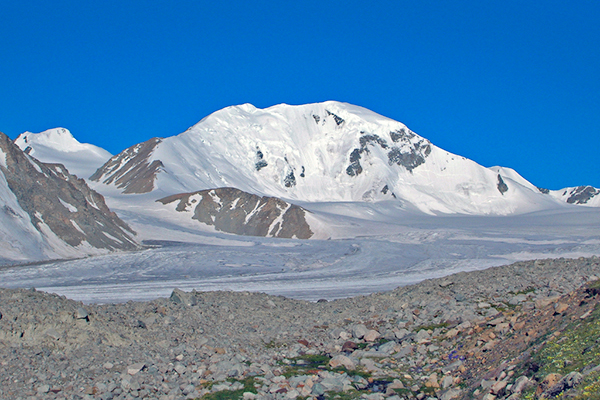

The Mongolian Altai Mountain Range stretches across the south and west of Mongolia. Its highest point is the Tavan Bogd peak at an altitude of 4370m, in the far west, where China, Russia and Mongolia share a common border. The climb is challenging for any experienced climber, due to its technical nature. The 19 km long and up to 2.5 km wide Potanin Glacier lies at the foot of the mountains. The Potanin Glacier descends to an elevation of 2,900 m; its base is covered with moraine. Water from the melting ice flows into the Khovd River basin.The glacier was discovered by V. V. Sapozhnikov in 1905 and named in honor of G. N. Potanin.
The climate in this high mountain area can be extreme, since it is above the tree line. There is very little vegetation, giving the surrounding landscape a barren appearance. Very few species have adapted to these harsh conditions and the area is characterized by tundra, lichen-covered rocks, alpine meadows and high mountain swamps. The Glacier is used by some of the large mammals of Mongolia to cross westwards through the mountain range. Footprints from brown bears as well as snow leopards can often be found.
Recommended


Mongolian winter is the most incredible winter that one might experience and there is plenty to see and enjoy during a winter travel. Glittering white snow, clear fresh air, sun, and little chills are the image of Mongolian winter. Taking this fan...
Duration: 3 Days / 2 Nights
Destination: Gobi - Central


All of Mongolians celebrate the Lunar New Year, which is called in Mongolia “Tsagaan Sar” or the “White Moon”. It is widely celebrated throughout the country around January or February according to the combination of Solar-...





